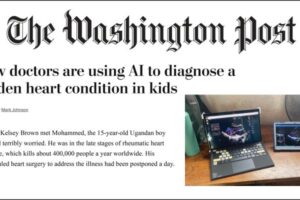What is World Population Day?
For most people, a birthday is nothing more than a time to celebrate his or her life on Earth. However, for Matej Mitja Gašpar, his birthday is an occasion for the entire world.
With his birth on July 11th 1987, Gašpar became the symbolic 5 billionth person alive concurrently on Earth. The tremendous fascination the Day of 5 Billion People garnered led the U.N. to establish World Population Day two years later in 1989.
World Population Day seeks to bring awareness to a variety of population issues including: the importance of family planning, gender equality, poverty, maternal health, and basic human rights.
This year’s theme is “Family Planning is a Human Right,” to celebrate the 50th anniversary of the 1968 International Conference on Human Rights, whose outcome document, known as the Tehran Proclamation, affirmed family planning to be a human right.
Resolution XVIII similarly proclaimed, “couples have a basic human right to determine freely and responsibly on the number and spacing of their children and a right to adequate education and information in this respect.”
The conference of 1968 declared every individual has the human right to determine his or her own future but, what about the future of the world?
Family Planning: What it Can Do
Saving Mothers and Children: Research has shown contraceptive access and can reduce high-risk and high parity births, as well as the rate of unsafe abortions, one of the leading causes of maternal death. By 2020, USAID predicts family planning will save the lives of 450,000 mothers and over 7 million children under 5, in 24 priority countries.
Economic Prosperity: Reducing adolescent fertility rates can cause a “Demographic Dividend.” Fewer children per household leads to more investment per child, more freedom for women to seek education and employment, and more household savings in old age.
Impact on the Planet: Research has shown that a slower population growth would likely decrease carbon emissions.
Peace-Seekers: Populations with “youth bulges” (high proportion of 15-29 yr. olds relative to the older population) are highly prone to violence and intrastate conflict. The impact of decreased fertility is significant. As the population ages, the likelihood of achieving liberalization and political stability increases.
Spotlight on Global Health Initiative Executives:
For women of reproductive age, HIV/AIDS and complications relating to pregnancy and childbearing are the top two causes of death worldwide. Education about family planning and access to voluntary services can increase the quality of life of those living with HIV, and can decrease maternal deaths of women with HIV. Integrating family planning and HIV services will accelerate progress towards ending pediatric HIV infections.
While currently there are several factors hindering effective integration, doctors at Children’s National are actively dedicated to improving services HIV affected individuals and families.
Dr. Natella Rakhmanina focuses her research on the treatment and prevention of HIV in children and adolescents through use of antiretroviral drugs. In Russia, she was co-editor of the first national textbook on Pediatric and maternal HIV.
Rakhmanina serves as a technical lead for several EGPAF projects based in Africa, including the Red Carpet Linkage to Care of Adolescents Program in Kenya and New Horizons Collaborative in Zambia, Kenya, Lesotho, Swaziland, Uganda and South Africa.
One recent health concern for women of reproductive age is the Zika virus. According to a recent study, the virus could be transmitted to up to 43.9% of the world’s population. Family planning services are essential to delay pregnancies and help prevent unintended ones in zones with active Zika transmission. Currently, more than one-quarter of Zika countries do not meet the benchmark for family planning services.
Dr. Dorothy Bulas has contributed her expertise in fetal imaging, and prenatal sonographic and MRI evaluation of congenital anomalies to Children’s National’s Congenital Zika Virus Program. The program evaluated 36 women and their fetuses between January 2016 – May 2017, and provided postnatal consultations for 14 other women. At IDWeek 2017, Bulas then co-addressed the audience about the lessons learned from the program.
Bulas has also recently co-authored a paper on novel neuroimaging features in two normocephalic newborns with Zika exposure. The new findings stress the importance of post-natal MRIs for all in utero exposed newborns, even for those with normal-birth-head circumferences and fetal imaging results.
Being at the forefront of both long-standing and current issues affecting the global population is integral to ensuring future youths grow up healthier and stronger, regardless of whether or not their birthdays mark another billionth for the world.




